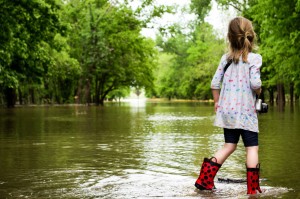 Our student Green Team volunteers and a handful of other students are LCC’s “eco-warriors” who are active in considering new ways to educate, support, and advocate for our environment. Despite their efforts and a strong commitment from school administration, I am still concerned about awareness and ownership of environmental issues across our broader school community.
Our student Green Team volunteers and a handful of other students are LCC’s “eco-warriors” who are active in considering new ways to educate, support, and advocate for our environment. Despite their efforts and a strong commitment from school administration, I am still concerned about awareness and ownership of environmental issues across our broader school community.
I write this as thousands of people in our city are out of their homes due to catastrophic flooding. Two years ago, major floods were called “once-in-a-century floods”. Unfortunately, they happened again. It can be very tough for young people to process the many elements of climate change. Many people, young and old, think they can have little real impact. I believe that none of us should sit on the sidelines; we should all consider how we can play a part in protecting our environment.
LCC has taken a lot of steps in recent years, but we cannot rest on our laurels and should do more. These are some environmental initiatives undertaken at the school:
Between 2005 and 2010, we started a student Green Team, introduced recycling in a systematic way and addressed a number of costly campus infrastructure issues, replacing inefficient furnaces, ventilation systems and energy-wasting lighting. We also constructed Montreal’s most energy efficient arena in 2008, using an efficient ice-making system called ECO CHILL. That building is LEED Silver Certified (highly sustainable standards). In 2009, we made the environment one of the seven key pillars of our school’s Strategic Plan.
After 2010, our Board of Governors adopted and published a Sustainability Commitment, and we have continued to improve our facilities with sustainability and energy efficiency in mind. This was reflected in the renovation of our science wing in summer of 2010 and construction of the LEED Gold Certified Assaly Arts Centre in 2013. It has many sustainable attributes, including geothermal heating. During those years, an active staff Sustainability Committee and an LCC Parent Environmental Committee also worked on promoting sustainability practices in day-to-day school life.
We have replaced washroom taps with automatic units and installed low-flow urinals. We purchase only sustainably-sourced paper, introduced composting in our food service operations and LCC was twice named one of Canada’s Top 100 Green Employers. All along the way, teachers at all levels have considered ways to focus on the teaching and learning about the environment in our curriculum.
Beyond our committed eco-warriors, I still think we can do better by giving environmental education and sustainability a higher profile. In all fairness, many students and adults are not sure what they can do to help, either at school or at home.
Despite Canada’s small population and vast open spaces, we do not have an admirable track record on a host of environmental benchmarks. We are signatories to the 2015 Paris Accord on reducing harmful emissions, yet each Canadian produces 22 tonnes of greenhouse gas per year. That is the highest among all G20 countries and nearly three times the G20 average of eight tonnes per person.
I am pleased that the world has been effectively nudged by the work of many young environmental activists. Notably, 16-year-old Swedish Nobel nominee Greta Thunberg has presented a powerful call-to-action to youth globally. Her message and her passion for this cause are impressive. She reminds all adults that in many ways we have failed this young generation, and now it is time to pull together and act on behalf of Mother Earth.
In an effort to raise the bar on environmental issues, LCC recently joined a new Environmental Steering Committee of a few CAIS schools. We are working together to set higher standards and benchmarks and hopefully impact all of our nearly 100 CAIS schools across the county.
I invite all students to sit up, listen and take notice. How do we share ideas for improvement within our school and with other CAIS schools? I asked them to channel their thoughts through our advisory groups, Green Team or Student Council. Most importantly, let’s consider how we translate our ideas into action. This is a whole-school initiative that could have long-term impact.
To paraphrase American writer H. Jackson Brown from his NYT bestseller Life’s Little Instruction Book, 20 years from now our students will be more disappointed by the things that they didn’t do than by the ones they did. – Christopher Shannon (Pre-U ’76), Headmaster

 Although this has been a very challenging winter with radical temperature shifts, last summer was the hottest on record in Montreal. Montreal is a city of extremes, shifting from as low as -40°C to +40°C, a major differential and one of the most significant temperature shifts in the world. No wonder our roads are so bumpy with a long cycle of freezing, thawing, and freezing again.
Although this has been a very challenging winter with radical temperature shifts, last summer was the hottest on record in Montreal. Montreal is a city of extremes, shifting from as low as -40°C to +40°C, a major differential and one of the most significant temperature shifts in the world. No wonder our roads are so bumpy with a long cycle of freezing, thawing, and freezing again. Last year, the Green Team built a greenhouse in the hockey parking lot next to the bike racks. The greenhouse, and its revival, has been our CAS (Creativity, Activity, Service) project for the year. So far, we have achieved heaps, such as: installing insulation, irrigation and shelves to hold the plants. The greenhouse is almost ready to be used, despite the many, many setbacks we have had. The winter was very harsh this year, so we had to wait until the snow was gone to start putting plants in the greenhouse. Now that the sun has finally come out, it should be up and running soon. Our goal is to use the greenhouse to grow produce that can be used directly by the LCC kitchen and in our community (for example, food banks). We hope to spread awareness about the benefits of a sustainable system and promote community engagement. We aim to do this via our very own greenhouse and, eventually, through a community farm.
Last year, the Green Team built a greenhouse in the hockey parking lot next to the bike racks. The greenhouse, and its revival, has been our CAS (Creativity, Activity, Service) project for the year. So far, we have achieved heaps, such as: installing insulation, irrigation and shelves to hold the plants. The greenhouse is almost ready to be used, despite the many, many setbacks we have had. The winter was very harsh this year, so we had to wait until the snow was gone to start putting plants in the greenhouse. Now that the sun has finally come out, it should be up and running soon. Our goal is to use the greenhouse to grow produce that can be used directly by the LCC kitchen and in our community (for example, food banks). We hope to spread awareness about the benefits of a sustainable system and promote community engagement. We aim to do this via our very own greenhouse and, eventually, through a community farm.


 Returning to Montreal by car recently from a weekend out of town, I was disappointed to hear that our city was cloaked in an official smog warning. Many of us may be inclined to associate smog with summer heat and visible thick, orange haze. However, Montreal actually experiences more smog alerts during late fall and winter than we do during the summer. This is because of a combination of heavy cold air and light winds that trap pollution close to the ground.
Returning to Montreal by car recently from a weekend out of town, I was disappointed to hear that our city was cloaked in an official smog warning. Many of us may be inclined to associate smog with summer heat and visible thick, orange haze. However, Montreal actually experiences more smog alerts during late fall and winter than we do during the summer. This is because of a combination of heavy cold air and light winds that trap pollution close to the ground. In October, I had the privilege of being one of over a thousand student and adult delegates at the Round Square International Conference in Cape Town, South Africa.
In October, I had the privilege of being one of over a thousand student and adult delegates at the Round Square International Conference in Cape Town, South Africa.